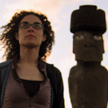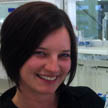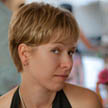I’m a Scientist is like school science lessons meet the X Factor! School students choose which scientist gets a prize of $1000 to communicate their work.
Scientists and students talk on this website. They both break down barriers, have fun and learn. But only the students get to vote.
This zone is the Organs Zone. It has scientists studying health and disease in various parts of our bodies. Who gets the prize? YOU decide!









I don’t know….this sounds like a question for Emma. I hope so! I know that some kids seem to be helped with various therapies….but that’s not a cure.
0
I have worked on a genetic form of autism, which means that they have a mistake in their DNA that causes the autism, and at this point, we can’t cure it. But what we can do is help them with the things they find difficult in their daily lives to make life easier. Sometimes this involves changing the things they eat, sometimes it’s changing behaviours like going to a speech or physiotherapist. Autism is very broad and autism can be really different in different kids.
The biggest problem is that we don’t really know what causes autism yet, but lots of people are working very hard on it! One day hopefully we will be able to cure it!
1
Autism is a disorder which affects how neurons develop in the brain (although it may also affect neural development in other parts of the body too). The shared features of autism sufferers are impaired social interactions, difficulty in communication and behaviour that is often restricted and repetitive. The disorder is heterogenous or mixed which means different people are affected by it differently and it also affects male 4 times as often as females.
This suggests that autism is genetic (and may have some influence from the environment- parental age, exposure to chemicals in the mother’s womb). It seems that Emma, Hannah and myself have all worked on a genetic form of autism in our work. There is much study that is trying to understand how information processing in the brain is affected in autism but because there is not much known – it cannot be cured.
What we can do as Hannah mentioned is provide opportunities to improve the quality of life for people with autism. There’s a lot of information out on the web, but you need to be careful because of misrepresentation of information. Good places to find out more about autism and autism research are the Simons foundation autism research initiative (https://sfari.org/) or the National Institute of Mental Health (NIMH) (https://1.usa.gov/OhkNbO) or for something more local Autism Victoria/AMAZE (https://bit.ly/NVf5M6)
0
Autism is a very complicated condition and looks different in every person. That’s why it’s now called ‘Autism Sprectrum Disorder’, or ASD for short. This an important point because many people with ASD lead healthy and relatively normal lives. They still have some problems interacting socially, with language, and might have repetitive behaviours. These are the main traits of Autism. But those problems are not severe enough for the person to have difficulty in life and often people on the mild end of the spectrum are highly intelligent and do very well in school. So, there is no reason to ‘cure’ them. Temple Grandin, who has a form of ASD, talks about how her mind works (https://www.templegrandin.com/). She says that she can “think in pictures” which can help her to solve problems other people might not see a solution to.
However, some people with ASD have more severe symptoms which mean that they cannot communicate easily or at all with others, or they might experience digestive problems, hypersensitivity to lights and sound, trouble sleeping, aggressive behaviour, seizures or anxiety. These symptoms are often very disabling as you can imagine. Those are the symptoms that most scientists working on ASD are keen to cure. I am currently working on trying to understand the cause of some of these disabling symptoms by understanding the way that brain cells communicate with each other. We now think that many complicated diseases of the brain such as ASD and schizophrenia are caused by brain cells miscommunicating. Once we understand how this miscommunication is ocurring, it might be possible to make new drugs which can improve the communication between brain cells and help people with disabling ASD.
0
No cure. Scientists like Hannah (as she mentioned) and Emma are looking into what autism really is and how we can help those who are autistic. The main thing we can do today, is to be kind and help and interact with people who have autism. They are still people even though they are socially “awkward”…
0